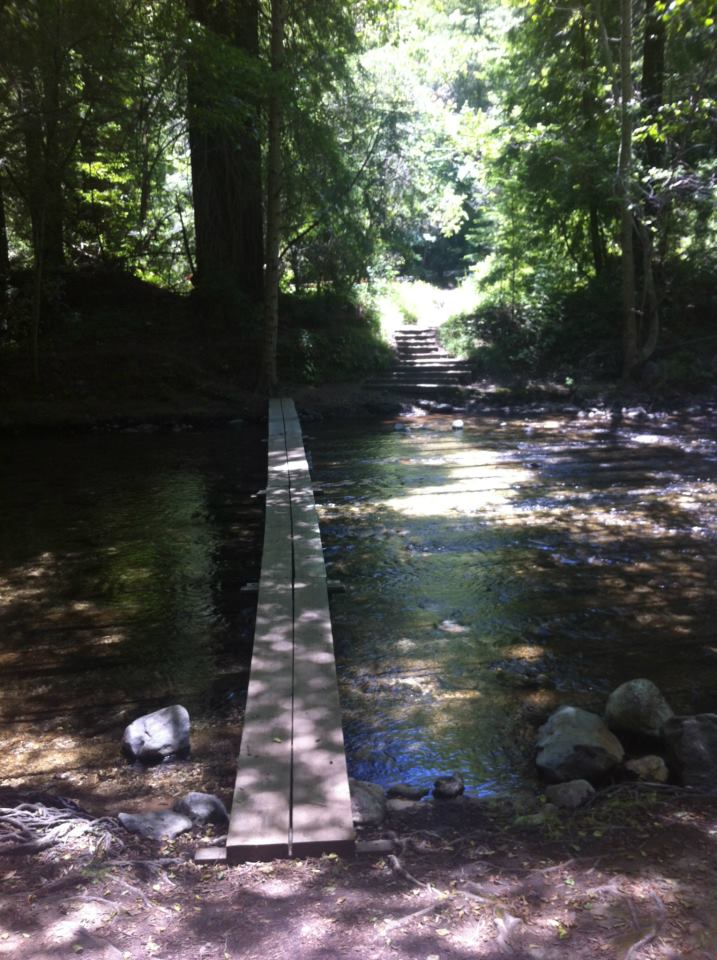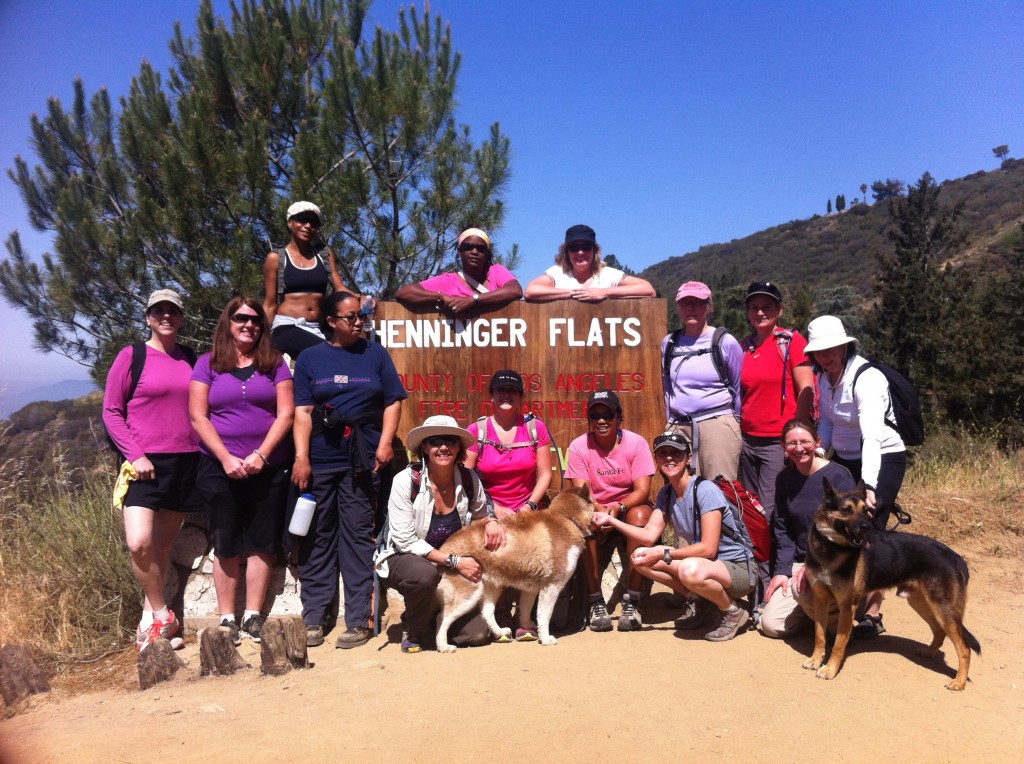Hiking with Novices
While leading a short day hike recently, I was sharing tips for navigating the trail when out of nowhere I was asked to blog the topic. I was a little surprised by the request, since the basics are just that and don’t seem “blog worthy”, but when I actually think of all the hikes I’ve led with unprepared people, I realized that there is an early learning curve that can make a huge difference in your experience. So, for those of you who are attracted to hiking, but haven’t done much dabbling and are not ready to seek out assistance, here are a few essentials to make your early days safer and more enjoyable.
To begin with, if you can walk without assistance, you can also enjoy the pleasure of hiking. It may seem overwhelming or scary, but it’s really just a matter of being smart about how you go about it. This list may seem like common sense, but I’ve come to know that there is really no such thing as “common sense” when you are operating outside of your own experience. However, these tips will quickly become second nature once you’ve been on a number hikes and your knowledge and skills increase with practice and exposure to new elements.
- Master the basics. Keep it super simple in the beginning.
- Go with at least one friend. Safety in numbers, always.
- Take a fully charged cell phone. Accidents happen, so keep a safety net handy. I also keep a whistle on my pack, just in case I’m out of cell range.
- Take more water than you can imagine needing. Most beginners way underestimate their hydration needs, even for short hikes. This is especially true in hot weather.
- Take snacks for the breaks. Even on relatively short hikes, snacks are great for the half-way point of the hike. Not only will they recharge your energy, they provide a well-earned treat for the break. Kind bars, nuts and beef jerky are a great example.
- Dress for the occasion:
- Pants or shorts in a breathable material that have sufficient room to stretch. Generally speaking, jeans don’t make great trail pants since they tend to be too restricting and heavy.
- Layered, light colored tops… Most hikes start early in the cool morning, but your body quickly warms with exertion and sunlight. Be prepared to shed your outer layers. But, while resting, especially if you’re on a peak, you will quickly cool off so keep your layers handy. Avoid the heat magnets of black and dark colors on warm, sunny days.
- Wear off road shoes. Trail shoes or hiking boots are best, but other shoes can work if they have decent tread. Walking on dirt is obviously not the same as walking on concrete since dirt and sand easily move under foot. The smoother the surface on the bottom of your shoes, they less traction they will provide… which means the likelihood of slipping increases.
- Rest… OFTEN, especially while you’re still warming up. When you’re a novice, the goal needs to be simply making the hike a good experience, so take your time. Don’t let yourself get caught up in “this should be easy because my friend can do it”, or some other irrelevant judgment. If your heart is racing and you’re having difficulty breathing, you are working way too hard and need more frequent rest.

- Keep your beginning hikes on popular trails, since they are generally the safest and easiest to navigate. There are plenty of resources to help you choose the most suitable hike. (One of my favorite online local guides is Hiker Dan.) However, if you inadvertently choose a more challenging trail, no need to panic. You can either double back the way you came or work your way through the rough patch. Here are a few helpful strategies for traversing dodgy terrain.
- Navigating slippery slopes:
- Keep moving, rest on more even sections or in the grass or weeds. Stopping for too long on a steep slope of loose dirt or sand can cause the dirt to shift underfoot.
- Rest as often as needed. Getting too tired can cause you to make poor choices for footing, so take your time.
- Try turning your body parallel (sideways) to the mountain and side stepping down for greater control. Staying to the edges of the trail along the grass and weeds also provides extra traction.
- When in serious doubt, just booty-scoot (That means literally sit on your heels and slide down the hardest or scariest sections.) You may feel silly and end up with a dirty bum, but at least you made it down safely.
- Navigating trails with severe drop offs.
- Again, stay on the main trails in the beginning since they are generally wider and more populated.
- When navigating a trail with a steep drop off like the Mt. Wilson Trail, stay close to the mountain side and avoid walking along the edge. If you tend to get dizzy with heights, then keep your eyes on the ground in front of you or mountainside next to you unless you are at a complete stop… Then take the time to enjoy the view. After all, the view is the whole reason for the climb!
- When you encounter other people on the trail, the safest and most courteous action is to either hug the mountain and let them pass, or to stop on a wider section of the trail and let them go by.
- Navigating streams and rocky surfaces… use great caution for unstable or slippery surfaces. Rocks move, sand slips, wet rocks get mossy, etc. Sometimes, you may even find it more fun to just walk through the water than trying to navigate the terrain… unless of course it’s an awesome little foot bridge!

- End your hike well before dark. Hiking in the dark is an absolutely awesome experience, but needs additional preparation and skill. So, if you’re going to be out after dark, make sure you’re with a skilled leader. One of the easiest ways to make sure you’re back to your car before dark is to gauge your start time against sunset. (Ex: If you start at 3pm and it gets dark at 6pm, you know you have 3 hours max for the round trip, which means half of the time needs to be saved for the return.) Leave time for a break at the half-way point and remember the closer to dark, the more the lighting will impact your ability to navigate the trail. When in doubt, just head back early.

- Lastly, it would be all unicorns and rainbows if I didn’t include at least a few words of caution…
- Always stay on the marked trail. Even experienced hikers can get disoriented and lost when they leave the trail.
- Be aware of your surroundings… listen and watch for rattle snakes, poison oak, etc. The local mountains are a world unto themselves and while generally benign definitely warrant respect.
- Check the weather in advance and keep an eye on the sky. Even in the San Gabriels, storms can roll in fast and change conditions dramatically.
- Let someone know where you’re going (and don’t change plans) and when you’ll be back. Worst case scenario, you know they will call for assistance.


